Our nation’s famed and magnificent Capitol has the power to turn justice, law, and democracy into emotions with its striking design and rich, historic atmosphere. Architecturally, the Capitol Building has a jurisdictional grandeur, evoking oohs and ahs from international visitors, American citizens, and everyone in between. Inside, a variety of artistic mediums—including busts of the Founding Fathers, relief sculptures, and oil paintings—amplify this impressive aura. They help to glorify the history of the nation, essentially making the Capitol Building an American Acropolis.
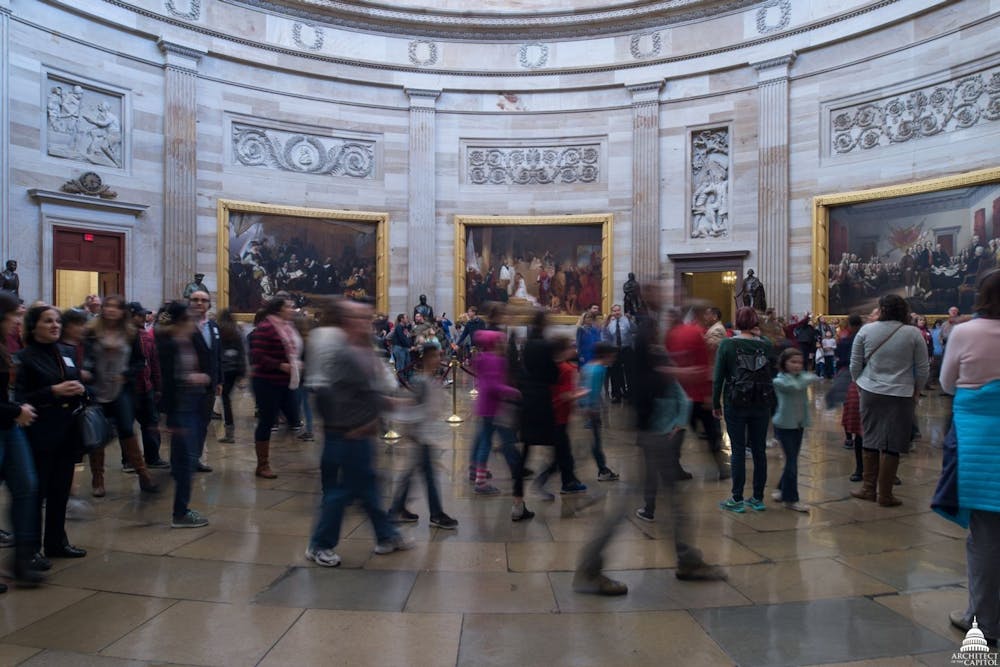
Visitors in the Capitol Rotunda/photo courtesy of Architect of the Capitol
As to be expected, public interpretations of the values underpinning the Capitol Building continue to evolve. While our recent history would fill up many pages in a book recording the shifts in public consciousness, there would also be chapters detailing moments closer to our nation’s founding.
One such event would be the British Burning of Washington during the War of 1812, a juncture with eerie similarities to the recent invasion of the Capitol by supporters of President Donald Trump who maintain that the 2020 election was fraudulent. As images of the march pervaded social media, the disjunction between the chosen location and participants became apparent. Armed individuals sporting “6 Million Wasn’t Enough” T–shirts—while waving Confederate and Trump flags—walked through the halls, professing a commitment to democratic values. This event was nothing short of a wake–up call to consider how much the nation has really progressed since its founding days, as well as how tangible these professed values actually are.

Supporters of United States President Donald Trump in the Capitol Rotunda after breaching Capitol security in Washington/photo courtesy of Jim Lo Scalzo, Al Jazeera
Images of these violent protesters amid the Capitol’s historical splendor have forever changed not just global and domestic perceptions of our government, but also the symbolic understanding of the Capitol’s political artwork. The messages of these decorative pieces concerning the nation’s guiding principles and cherished historical moments are now being demystified, recontextualized, and re–understood.
The eight paintings in the Capitol Rotunda are a good starting point for this complete and candid discussion. Touching on their historical backgrounds, shortcomings, modern–day ironies, and inspirational takeaways will flesh out the tensions between the political goals and 21st–century meanings of these paintings, helping to consider them in a new and more relevant light.
Four images commemorating the Revolutionary War, painted by John Trumbull, were mounted in the Rotunda between 1819 and 1824. They all have a realistic likeness, almost as if they were pictures taken at their respective moments in history. Declaration of Independence is starkly monotonous—consisting almost entirely of a barrage of somber white male faces This sameness is a visual reminder of the singular identity our early nation was created to serve.
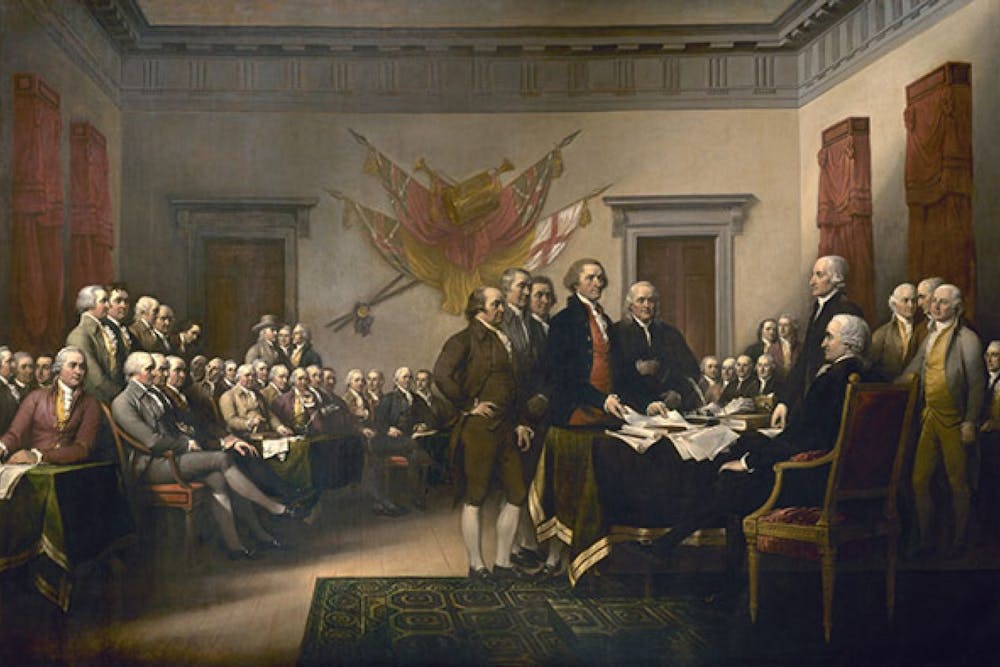
Declaration of Independence (1826) by John Trumbull/photo courtesy of Architect of the Capitol
Such a lack of diversity is also apparent in General George Washington Resigning His Commission, a depiction of another exclusive governmental process. While our current government is not as heterogeneous as it should be, Congress is growing more and more diverse each election cycle—a clear hallmark of progress that should be celebrated and supported.
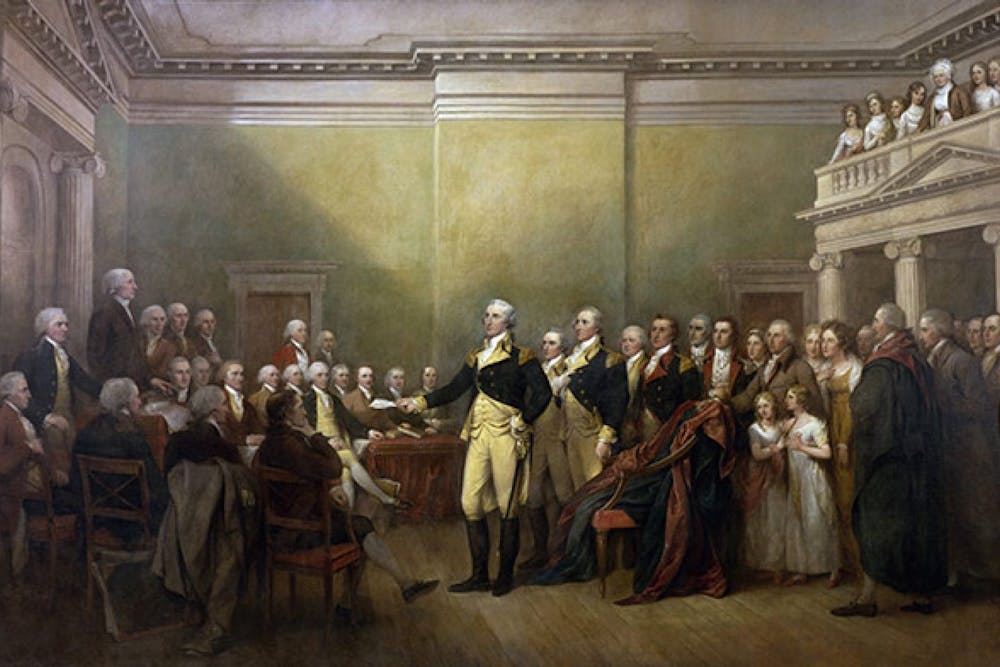
General George Washington Resigning His Commission (1826) by John Trumbull/photo courtesy of Architect of the Capitol
Surrender of General Burgoyne and Surrender of Lord Cornwallis are both scenes depicting an understanding that a battle has concluded and they demonstrate moments of peace between two warring sides. While Republicans and Democrats are not shooting cannons at one another (yet), the Revolutionary War between the British and the colonists should teach both parties important lessons. These paintings of reconciliatory moments should inspire these polarized groups to come together with bipartisan support for critical issues like human rights and climate change. Or, on the most basic level, both parties can stand to learn when it is time to sheath their swords, as well as how to respect their opponents.
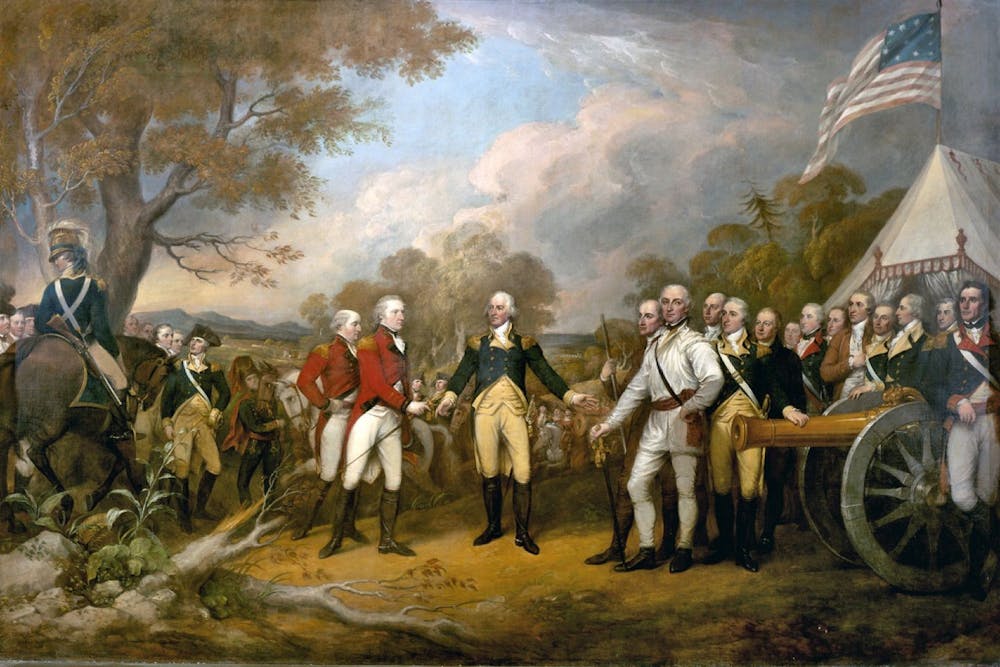
Surrender of General Burgoyne (1826) by John Trumbull/photo courtesy of Architect of the Capitol
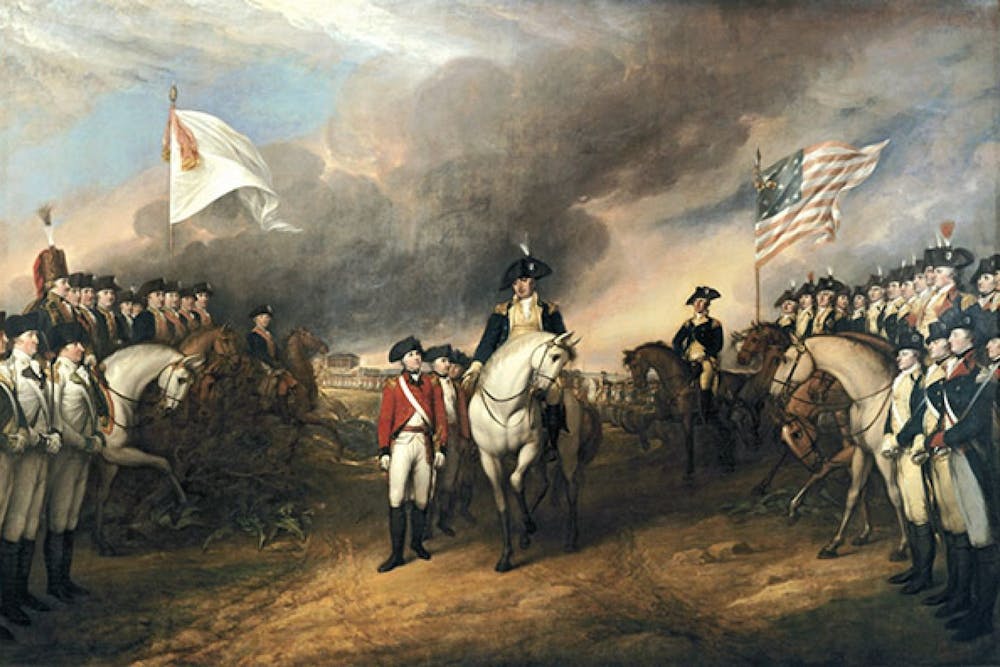
Surrender of Lord Cornwallis (1826) by John Trumbull/photo courtesy of Architect of the Capitol
The British leaders in these images honorably admitted their loss, which is a skill our current president must learn as he continues to maintain the election was stolen from him, despite having great proof it was not. General George Washington Resigning his Commission echoes an important message not just to Trump, but to future leaders as well. This painting exemplifies George Washington's commitment to democracy and the citizens of the United States. The role of a politician should be to serve the best interests of their constituents rather than to bolster their ego. As this painting emphasizes, power and status should never be prioritized over the sanctity of political office, which is a fact that many modern–day politicians must be reminded of.
Four more oil–on–canvas paintings were added to the Rotunda between 1840 and 1855, all of which are described as “scenes of exploration.” Each piece relies on romanticized, false assumptions about colonialism. Approaching these paintings with the understanding that Europeans justified their pillage of Indigenous territory with religion, coercion, and claims of superiority might make viewers wonder why, of all moments in our nation’s history, these are being celebrated.
The violence illustrated in Landing of Columbus and the stereotypical depictions of Native Americans in Discovery of the Mississippi by De Soto should be understood as grave injustices in our nation’s past. Ultimately, they should motivate both our government and everyday viewers to fight against contemporary systems of oppression. Despite this, many Americans, including—but not limited to—those who invaded the Capitol, hold discriminatory beliefs against religious minorities, ethnic minorities, the LGBTQ community, and many more, aligning them closely with the colonists who plundered the continent.

Landing of Columbus (1847) by John Vanderlyn/photo courtesy of Architect of the Capitol
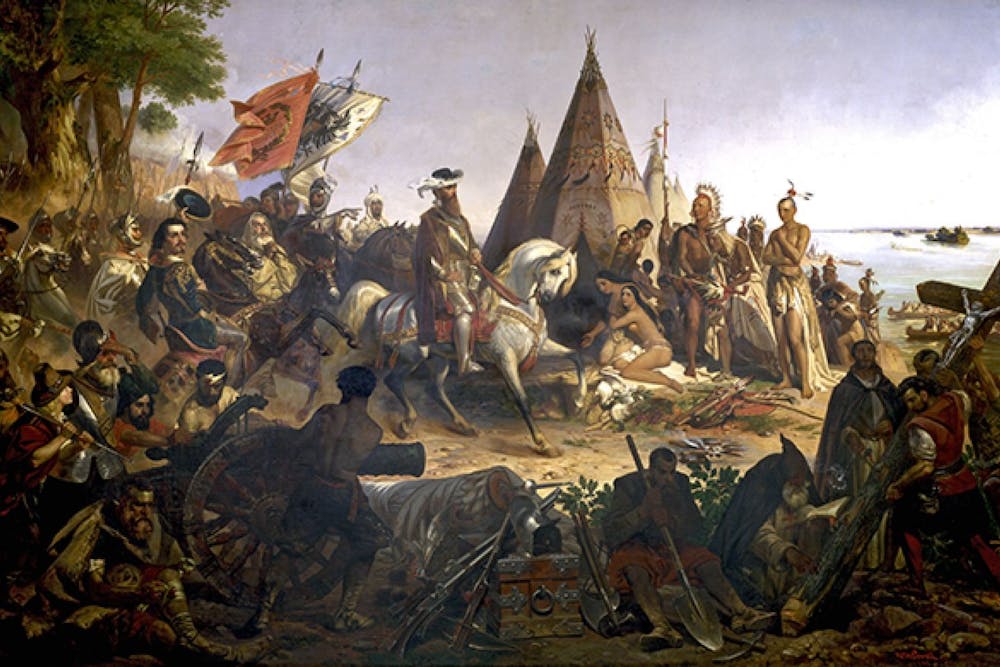
Discovery of the Mississippi by De Soto (1855) by William H. Powell/photo courtesy of Architect of the Capitol

Baptism of Pocahontas (1840) by John Gadsby Chapman/photo courtesy of Architect of the Capitol

Embarkation of the Pilgrims (1843) by Robert W. Weir/photo courtesy of Architect of the Capitol
A scrupulous analysis of the art in the Capitol, especially in light of recent events, can increase both personal and public consciousness. Questioning underlying assumptions, understanding the discrepancy between the paintings’ messages and reality, and critically recontextualizing the works with modern–day experiences are all new and crucial ways to approach artwork. This evaluative lens is one that all viewers, governmental or not, should incorporate into their repertoire and use as a guide for positive social change.

